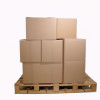
Category pages are essential for any eCommerce website, as they help to organize products and contribute to the overall user experience. But did you know that these pages also play a critical role in search engine optimization (SEO)? In this article, we’ll explore why category pages are important for SEO and how you can optimize them for better search engine rankings.
What are Category Pages?
Category pages are pages on an eCommerce website that group together similar products. For example, if you sell clothing, your category pages might include ‘Men’s Clothes’, ‘Women’s Clothes’, ‘Accessories’ and so on. These pages help to organize your products and make it easier for visitors to find what they’re looking for.
Why are Category Pages Important for SEO?
Category pages are important because they help to structure your website in a logical way, which search engines like Google prefer. By organizing products into specific categories, you’re creating a hierarchy that can help search engines understand your website and the products you sell. This makes it easier for search engines to crawl and index your website, which can ultimately lead to better search engine rankings.
Tips for Optimizing Category Pages
There are a few things you can do to optimize your category pages for SEO. These include:
1. Use descriptive titles: Make sure your category page title accurately describes the products contained within the category.
2. Add unique content: Write unique descriptions for each category page that include relevant keywords.
3. Use breadcrumbs: Breadcrumbs are navigational links that show visitors where they are on your website. They also help search engines understand the structure of your website and the relationship between different pages.
4. Include relevant filters: Allow visitors to filter products on your category pages by attributes such as size, color, and price. This makes it easier for visitors to find what they’re looking for and can help to reduce bounce rates.
5. Optimize your images: Use descriptive alt tags for your images, and compress them to improve page load times.
















